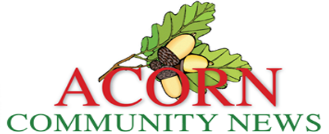|
When Emma Kearney became the
landlady of the Black Dog public house in Oswaldtwistle,
she soon realised this was a very old pub and set out to
find as much as she could about its history and her
predecessors.
Her research took her back to 1827
and the first landlady, Catherine Kershaw. This made
further research essential as in 1827 it was predominantly
a man’s world and almost unheard of for a woman to run a
public house.crop.jpg)
It was found that he Black Dog was
owned by Philip Kershaw from the early 1800s and left to
Catherine, along with all its contents, in his will. The
pub, however, is all that he left her and it was with the
proviso that should she remarry within five years of his
death she would lose it all.
Further research revealed that
Catherine, whose maiden name was Yates came originally
from the Belthorn area and her father was a yeoman farmer
who owned parcels of land and on his death left Catherine
a vast sum of money. Indeed Robert Yates is thought to
have also owned Duckworth Hall, which is next to the pub
of the same name that we are familiar with today.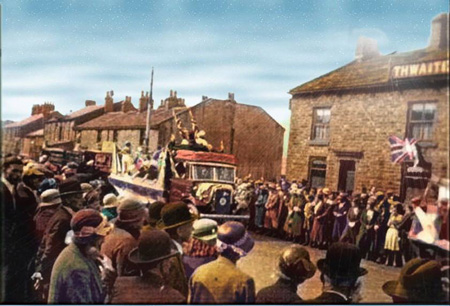
The Kershaw’s were also a well to do
family and apart from owning the Black Dog, it is also
thought that they owned the two cottages adjacent to it
and another public house on what is now the site of
Oswaldtwistle Library called The Old House at Home which
was probably obtained before the Black Dog. Later they
acquired several streets on which they built properties.
As Immanuel Church wasn’t built at
that time, the Kershaw family used to worship at St James
Church Kirk and it was found by checking church records
that the family had their own pew – another indication of
their wealth and standing in the community.
It has to be remembered that at the
time the Black Dog was built it was probably the only
property at the end of a vast moorland and it is largely
due the Enclosure Act of 1776, whereby people who had
rights to use areas of land, were offered the opportunity
to own parcels of it providing they built a wall or fence
around it. As the Kershaw’s already occupied vast parts of
the land they benefitted greatly from this.
Emma found the Time Tunnel at
Oswaldtwistle Mills very useful in researching facts such
as the time and nature of the Enclosure Act and this
facility is readily available for anyone researching the
history of the area.
Catherine and Philip had six
surviving children. One of them, also named Philip,
married Mary Thwaites, whose father was the original
Daniel Thwaites who started the famous brewery. Philip was
listed in documents as a surgeon, but it was found that he
actually trained as an apothecary and although he went to
London, never actually obtained a degree. He was also a
witness at a grave robbery trial.
When Catherine died in 1837, she was
succeeded at the Black Dog by her son Robert. He was
landlord until his death in 1850 when he left only one
shilling in his will to his wife and thus the Kershaw
family no longer owned The Black Dog.
The next landlord that Emma has been
researching was a man called James Halstead who was listed
at The Black Dog in 1903. He was a local policeman and he
also had another pub elsewhere, it is believed. It is not
certain if he bought the pub outright or if this was when
the brewery took it over and he was simply the landlord.
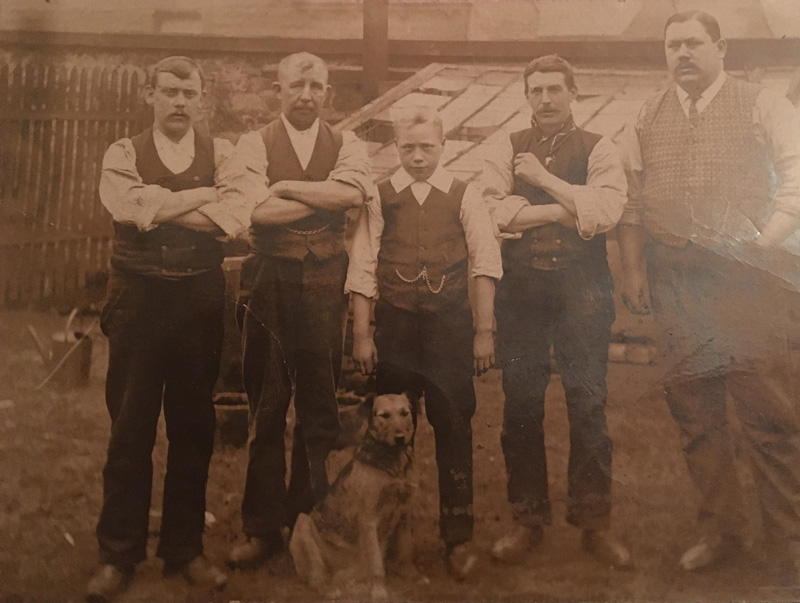
Picture at the back of The Black Dog shows James
on the right and Henry as a young boy in the middle
Interestingly, though, when the
Black Dog decided to do a tribute to mark the centenary of
the end of the First World War, Emma and her fellow
members of the Black Dog history group, looked into how
many of the young men who became the Accrington Pals may
have been locals at the pub and therefore possibly had
their last drink there before going to war.
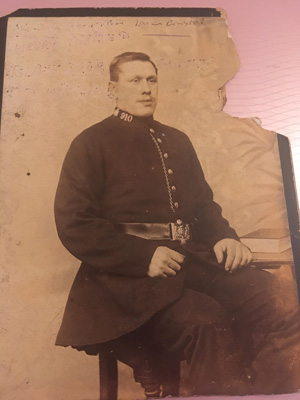
They found out that James’s son
Henry Halstead went off to fight in 1916 and died in 1918.
He was a member of the machine gun corps. It was learned
that James died before the war started.crop.jpg)
As Henry was the last male of the
Halstead family the name died with him. His sister,
however, married and named her son Henry Halstead
Greenwood. He went on to fight in World War Two and came
home again.
The tribute last year involved 1,100
poppies being placed around the outside of the Black Dog
to honour the 1,100 who lost their lives and people were
invited to write on cards for loved ones lost in all the
wars and place them among the poppies.
The Black Dog was always a hub of
the community and in those early days, immunisation
clinics, coroners’ courts, miners meetings and inquests
were all conducted there.
The pub continues
to hold community events with two weekly pensioners’
afternoons, monthly event for adults with learning
disabilities and more. All information can be found on
their Facebook page @BlackDogOssy or by emailing.
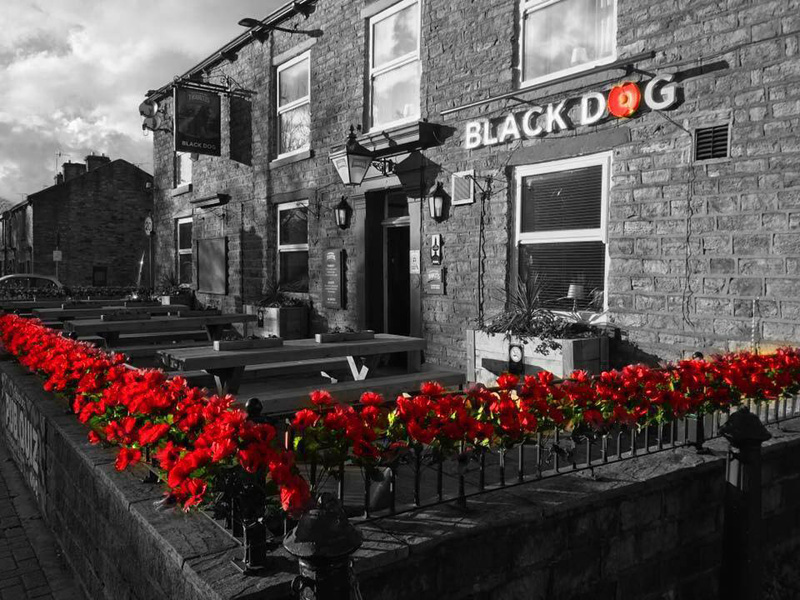
A man came into the pub since Emma
took over and told her he had worked at the back of the
pub breaking down the wall to make an entrance to the car
park and in creating the gap, they found within the
stonework knocked down, ornate church windows. Apparently
when St James’s second tower was built the stonework had
been made available for land owners to buy and it is
thought that The Black Dog back yard stonework was used
from this.
The Black Dog History Society meets
on the first Friday of every month at 10.30 a.m. and has
the support of people interested in local history and they
are always happy for anyone with any knowledge about the
history of the pub to contact them. Two people who have
been really supportive of Emma in her research have been
Hilary Austin, who has been alongside for most of the
quest and Albert Wilkinson who is a local historian and
regularly attends the meetings.
Emma is particularly interested as
to when the pub was actually built as it is thought from
certain clues within the building that it could go back
well into the 1700s.
The Black Dog would love to hear
from anyone who might be able to uncover more facts about
the pub’s history and can be contacted on 01254 390084,
blackdogoswaldtwistle@mail.com
and on Twitter and Facebook: @BlackDogOssy.
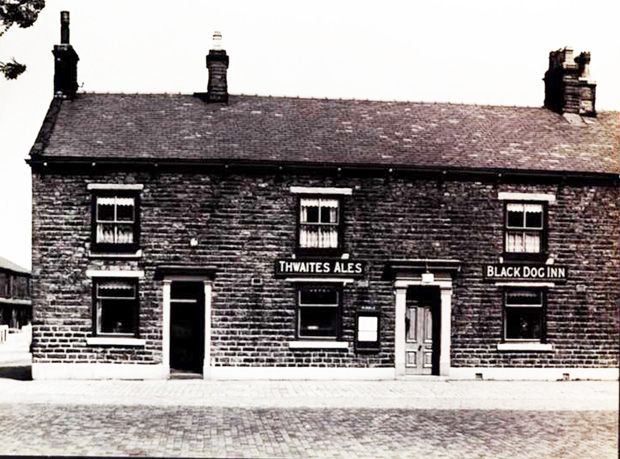
© Peter Jones 2019 |
